Introduction: Why Fire Safety Should Be at the Top of Every DIYer’s List
Home improvement and DIY projects bring immense satisfaction, but they also introduce risks that many enthusiasts overlook—chief among them, fire hazards. Whether you’re drilling into walls, soldering pipes, refinishing furniture, or simply using power tools, the potential for accidental fires is real. Yet, fire safety is often an afterthought, until it’s too late. For homeowners and DIYers alike, equipping your space with the right fire detection and suppression gadgets is as essential as having a quality drill or a reliable tape measure. In this comprehensive guide, we’ll break down the must-have fire safety tools, compare the latest detection and suppression technologies, and offer practical tips for integrating these life-saving devices into your home workshop or project area. By the end, you’ll not only know the best products for your needs, but also how to use and maintain them—helping ensure your next project doesn’t end in disaster.
The Most Common DIY Fire Hazards—and Why Standard Precautions Fall Short
Before diving into product comparisons, it’s crucial to understand the specific fire risks that come with DIY projects. These include:
- Electrical shorts from overloading circuits or improper wiring.
- Sparks from cutting, grinding, or soldering metal.
- Combustible dust from woodworking or sanding activities.
- Chemical fires from solvents, adhesives, or paint fumes.
- Neglected heat sources, such as heat guns or space heaters.
Standard home fire safety devices may not be tailored for these unique risks. For example, a basic smoke detector may not respond quickly enough to a fast-burning chemical fire, or a traditional kitchen extinguisher may be ineffective against electrical fires. Specialized gadgets can fill these gaps, but only if you know what to look for.
Essential Fire Detection Devices: Types, Features, and Placement
Smoke Detectors: Ionization vs. Photoelectric
Smoke detectors are the first and most critical line of defense. There are two main types:
- Ionization detectors: Best for fast-flaming fires, such as those caused by paper or flammable liquids.
- Photoelectric detectors: Excel at detecting smoldering fires, such as those started by electrical faults or overheated wires.
For DIY areas where both types of fires may occur, choose dual-sensor units or install one of each type. Look for models with:
- Battery backup in addition to hardwired power.
- Interconnectivity so all alarms sound if one detects smoke.
- Easy test/reset buttons for routine maintenance.
- Silence/hush features to avoid disabling after false alarms.
Heat Detectors: When and Where to Use Them
Heat detectors sense rapid temperature increases rather than smoke. They’re ideal for:
- Workshops with dust, which can cause false alarms in smoke detectors.
- Garages or attics where temperature swings are common.
Choose fixed-temperature models for areas prone to sudden fires, or rate-of-rise models for environments where heat builds up quickly.
Carbon Monoxide (CO) Detectors: A Must for Any Home Workshop
If you use fuel-burning tools or heaters, a CO detector is non-negotiable. Modern combo units detect both smoke and CO, saving space and simplifying maintenance.
Placement Tips for Maximum Protection
- Install detectors on the ceiling or high on walls—smoke and heat rise.
- Place one detector inside the workshop and another just outside, near sleeping areas.
- Test monthly and replace batteries every 6–12 months.
Fire Suppression Tools: Extinguishers, Blankets, and Beyond
Fire Extinguishers: Types and Ratings
Not all extinguishers are created equal. The right choice depends on the materials and tools in your workspace. The main types include:
- Class A: For wood, paper, and cloth fires.
- Class B: For flammable liquids like paint thinners or gasoline.
- Class C: For electrical fires—absolutely essential for DIYers.
- Class D: For combustible metals (rare in most homes).
- Class K: For cooking oils (for those with kitchen workshops).
Look for ABC-rated extinguishers for all-purpose coverage. For workshops with power tools, make sure Class C is included. Key features to consider:
- Easy-to-read pressure gauges
- Simple, single-hand operation
- Wall-mount brackets near exits
Fire Blankets: Fast Suppression for Small Fires
Fire blankets are compact, easy to deploy, and ideal for smothering small flames—especially useful for clothing or benchtop fires. Choose blankets made of woven fiberglass for heat resistance, and keep one within arm’s reach of your primary workspace.
Aerosol Suppression Sprays: Convenient but Limited
Compact aerosol fire extinguishers are popular for their size and ease of use. They’re best suited for minor fires or as a backup to a full-size extinguisher. Check for compatibility with electrical and grease fires, and note the discharge time—many last less than 30 seconds.
Automatic Suppression Systems: Worth the Investment?
Home-based automatic fire suppression systems, like ceiling-mounted canisters or under-bench modules, are becoming more affordable. These devices sense heat or flames and deploy suppressant automatically. Consider these if you routinely work with high-heat tools or flammable chemicals, or if your workspace is hard to access quickly.
Side-by-Side Comparison: Popular Fire Safety Gadgets for DIYers
| Device | Best For | Key Features | Estimated Cost | Pros | Cons |
|---|---|---|---|---|---|
| Dual-Sensor Smoke Detector | All DIY spaces | Ionization + photoelectric, battery backup, interconnect | $25–$50 | Fast/slow fire detection, easy install | Needs regular testing and battery changes |
| Heat Detector | Dusty/garage spaces | Fixed or rate-of-rise, low false alarms | $20–$40 | Reliable in harsh environments | Doesn’t detect smoke |
| CO/Smoke Combo Detector | Workshops with fuel tools | Dual sensors, digital display, battery/hardwire | $30–$60 | Space-saving, comprehensive alerts | Higher upfront cost |
| ABC Fire Extinguisher | General DIY use | Multi-class, pressure gauge, wall mount | $40–$70 | Handles most home fires | Needs yearly inspection |
| Fire Blanket | Small workbench fires | Fiberglass, quick-release pouch | $15–$35 | Reusable (if not damaged), no cleanup | Not for large fires |
| Aerosol Suppression Spray | Quick response, portable | One-hand use, compact canister | $15–$25 | Convenient, great for toolboxes | Limited capacity, short spray time |
| Automatic Suppression Canister | High-risk or remote areas | Heat/flame activation, ceiling/beneath bench | $80–$200 | Works unattended, peace of mind | Higher cost, installation required |
Fire Safety Setup: Step-by-Step Installation and Maintenance Guide
1. Assess Your Workspace
- Identify all ignition sources (tools, outlets, heaters).
- Note locations of flammable materials or chemicals.
- Determine exit routes and clearance space.
2. Plan Device Placement
- Install smoke/CO detectors on ceilings, at least 10 feet from tool benches to avoid false alarms but close enough for rapid detection.
- Mount extinguishers and blankets near exits and within easy reach—not behind clutter.
- Consider automatic suppression systems for hard-to-reach or high-risk spots.
3. Install Devices Properly
- Follow manufacturer instructions for mounting height and orientation.
- Test alarms upon installation and after any maintenance.
- Ensure extinguishers are secured but easily removable.
4. Establish a Maintenance Routine
- Test alarms monthly and log the results.
- Replace batteries (or backup batteries) every 6–12 months.
- Inspect extinguishers for pressure and expiration dates annually.
- Replace fire blankets if damaged or after use.
- Keep a reminder in your phone or workshop calendar.
Advanced Options: Smart Fire Safety Gadgets and Integration
Modern fire safety gadgets increasingly feature smart technology, allowing for remote monitoring, notifications, and automation:
- Smart smoke/CO detectors: Connect to Wi-Fi, send alerts to your phone, and can integrate with smart home hubs.
- Smart extinguishers: Some high-end models feature app-based maintenance reminders or location tracking.
- Integration with home security systems: Link detectors to alarm panels for rapid emergency response.
If you already have a smart home ecosystem (like Google Home, Alexa, or Apple HomeKit), look for compatible devices to create a seamless, automated safety net for your DIY space.
Cost Breakdown: Budgeting for Comprehensive Fire Safety
Effective fire safety doesn’t have to break the bank. Here’s a sample budget for outfitting a typical home workshop or garage:
- Dual-sensor smoke detector: $35
- CO/smoke combo: $45
- ABC fire extinguisher: $60
- Fire blanket: $25
- Aerosol suppression spray: $20
- Automatic suppression canister (optional): $120
Total (basic setup): $185
Total (with automatic suppression): $305
Factor in small ongoing costs for batteries and annual inspections. The investment is minor compared to the potential loss from even a small fire.
Maintenance and Best Practices: Keeping Your Fire Safety Gear Ready
- Keep access routes clear: Don’t let tools or storage block extinguishers, blankets, or exits.
- Train household members: Ensure everyone knows where devices are and how to use them. Practice extinguisher use outside (with an empty unit) if possible.
- Check expiration dates: Extinguishers and some detector sensors have limited lifespans—replace as needed.
- Document your setup: Take photos and log device models/serial numbers for insurance or emergency services.
- Stay updated: Review local fire codes and recommendations annually to ensure compliance.
Conclusion: Invest in Fire Safety—Protect Your Projects, Your Home, and Your Life
Fire safety isn’t just a checkbox—it’s a foundation for every successful DIYer. While it’s easy to get excited about the latest power tool or gadget, the most important investments are those that protect you, your loved ones, and your hard work from disaster. By understanding the unique fire risks of home repairs and projects, choosing the right mix of detection and suppression gadgets, and committing to regular maintenance, you turn your workspace into a safer, more productive environment. Whether you’re a weekend woodworker, a home mechanic, or a passionate renovator, the peace of mind that comes from a well-prepared fire safety setup is priceless. Take action today—review your current gear, fill any gaps, and make fire safety an integral part of your DIY routine. Your future self will thank you, and your home will be all the better for it.


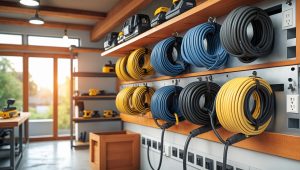
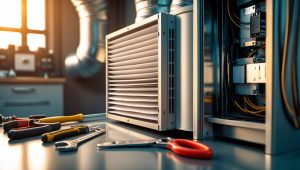

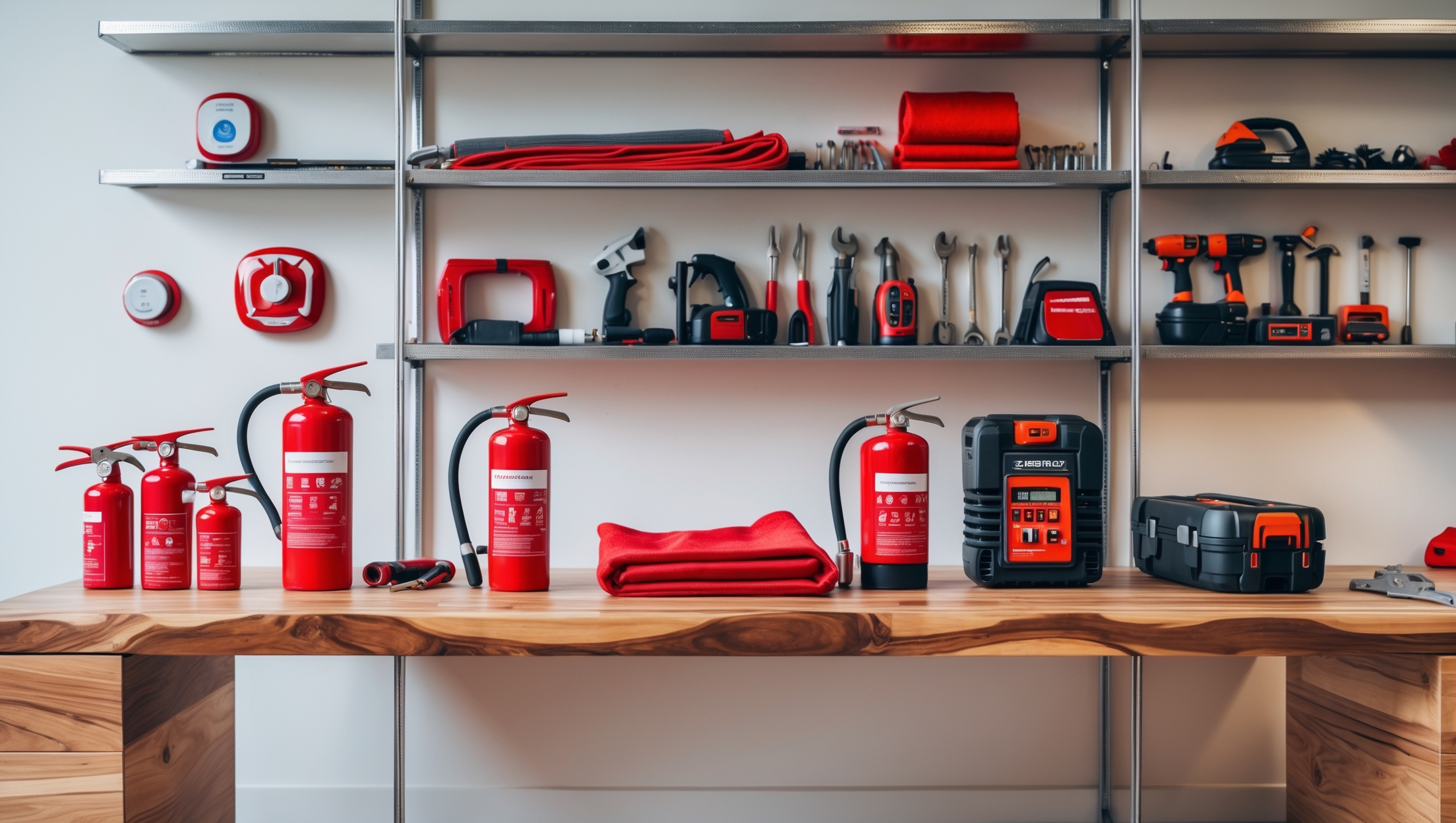

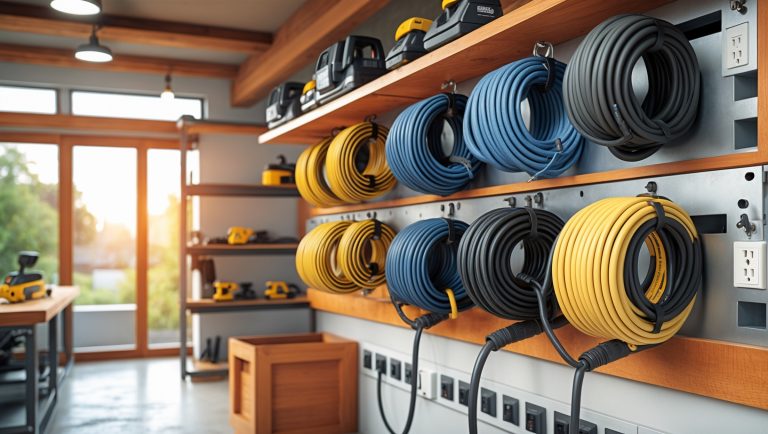

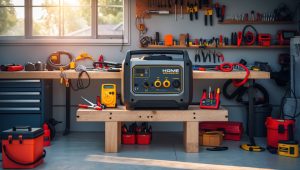
I do a lot of woodworking and sometimes use solvent-based finishes in my garage workshop. The article mentioned that standard smoke detectors might not respond fast enough to chemical fires. What kind of detection device would be safer for this type of environment?
In a workshop where you’re using solvent-based finishes, a heat detector or a multi-sensor detector would be a safer choice than a standard smoke detector. Heat detectors trigger when the temperature rises quickly, which is common in chemical fires, while multi-sensor units can detect both smoke and sudden temperature changes. Make sure any device you choose is rated for garages or workshops where dust and fumes may be present.
Could you clarify whether there are specific fire suppression tools that are more effective for dealing with chemical fires caused by solvents or adhesives that are common in DIY projects? I want to make sure whatever I buy will actually work for those scenarios.
For chemical fires caused by solvents or adhesives, you’ll want to avoid water-based extinguishers, as they can worsen the situation. Look for extinguishers rated for Class B fires, such as those using dry chemical (like ABC or BC extinguishers) or CO2. These are specifically designed to handle flammable liquids and are effective for most DIY-related chemical fire risks.
I’m interested in integrating better fire safety into my basement workspace, but I’m working with a tight budget. Are there any affordable fire detection or suppression gadgets you recommend that still offer solid protection for common DIY project hazards?
For a basement workspace on a budget, consider starting with a photoelectric smoke alarm, which is excellent for detecting smoldering fires common in DIY environments. Pair it with a basic battery-operated carbon monoxide detector for added safety. For suppression, a multipurpose (ABC-rated) fire extinguisher is both affordable and effective against electrical and flammable materials. Mount alarms on the ceiling and keep the extinguisher within easy reach of your work area.
I noticed you mentioned that standard smoke detectors might not respond quickly enough to chemical fires. Are there specific types of smoke or gas detectors you recommend for handling those faster, more dangerous scenarios in a DIY workshop?
For DIY workshops where chemical fires are a concern, consider photoelectric smoke detectors combined with heat detectors, as they can respond more quickly to smoldering and fast-flaming fires than standard ionization-only models. Additionally, a multi-gas detector that senses carbon monoxide, volatile organic compounds, and other hazardous gases will offer extra protection. Many of these devices are designed for easy installation, which fits well in a DIY environment.
You mentioned that standard smoke detectors might not respond quickly enough to chemical fires that can occur with DIY projects. Are there specific brands or models of detectors designed to pick up these types of fires faster, or would I need a combination of sensors?
For chemical fires often linked to DIY projects, a combination of smoke and heat detectors—or even air quality sensors—can improve early detection. Some brands, like Kidde and First Alert, offer dual-sensor alarms that use both ionization and photoelectric technology, helping detect a wider range of fire types. However, no standard home detector is specifically built to sense all chemical fires, so using multiple sensor types is the safest approach.
The article mentions integrating fire safety devices into a workshop, but I’m not sure how often these gadgets need to be tested or maintained to stay effective, especially when exposed to dust and fumes. Do you have any practical maintenance tips for keeping detection and suppression tools in top shape?
It’s smart to be proactive about maintenance in a dusty workshop. For smoke and heat detectors, test them monthly and gently vacuum vents to prevent dust buildup. Replace batteries at least once a year or according to manufacturer instructions. For fire extinguishers, check the pressure gauge monthly and wipe the exterior to keep labels readable. Ensure suppression systems are free of obstructions and schedule an annual professional inspection. Document each check so you can spot any changes or issues early.
Could you elaborate on how the newer detection gadgets differ from standard smoke detectors in terms of response time for things like electrical fires or rapid chemical ignition? I’m trying to decide if it’s worth upgrading my current setup before starting my next big DIY project.
Newer detection gadgets often use multiple sensors—like heat, carbon monoxide, and volatile gas detectors—alongside traditional smoke detection. This allows them to identify threats like electrical fires or rapid chemical ignition more quickly, sometimes before visible smoke occurs. Standard smoke detectors respond only when smoke is present, which can delay warning in fast-developing situations. Upgrading can mean earlier alerts and extra protection for complex DIY projects, especially those involving wiring or chemicals.
I run a small woodworking business out of my garage and often create a lot of sawdust. The article mentions combustible dust as a fire risk, but I’m not sure which fire suppression gadgets are actually effective for that specific hazard. Could you recommend something tailored for dusty environments?
For a woodworking garage with lots of sawdust, look for fire extinguishers rated for Class A (ordinary combustibles) and consider an automatic dry powder suppression system, as these work well in dusty environments. Avoid water mist or aerosol systems, since they can stir up dust clouds and spread the hazard. Also, regularly clean dust from surfaces to reduce ignition risk.
I see you listed combustible dust and electrical shorts as big risks for DIYers. Are there any fire suppression tools that can safely handle both situations, or do I need two different types of extinguishers for my workspace?
For a DIY workspace where both combustible dust and electrical shorts are possible, a multipurpose ABC dry chemical fire extinguisher is a great choice. It’s designed to handle Class A (ordinary combustibles like dust), Class B (flammable liquids), and Class C (electrical) fires. This means you won’t need two separate extinguishers—just make sure it’s easily accessible and that you know how to use it safely.
Can you clarify which type of fire detection device is best for projects that involve both electrical work and chemicals? I want to make sure I’m covering all the bases, but I’m also on a pretty tight budget, so I’d appreciate any advice on affordable yet reliable options.
For projects involving both electrical work and chemicals, it’s best to use a combination smoke and heat detector, ideally one that can detect both flaming and smoldering fires. Ionization smoke alarms are sensitive to flaming fires (often from electrical faults), while photoelectric alarms are better for smoldering fires (like those caused by chemicals). Consider dual-sensor alarms, which combine both technologies. There are budget-friendly dual-sensor models available that are reliable and easy to install, offering good coverage for your needs.
I do a lot of woodworking and use both adhesives and finishers regularly. Could you clarify which type of smoke detector—ionization or photoelectric—would be more reliable in a workshop where combustible dust and chemical fumes are present?
In a workshop with woodworking dust and chemical fumes, a photoelectric smoke detector is generally the better choice. Photoelectric models are more sensitive to smoldering fires, which can be caused by dust and slow-burning materials, and they’re less likely to trigger false alarms from chemical fumes compared to ionization detectors. It’s also a good idea to regularly clean the detector to prevent dust buildup.
Do you have advice on integrating these fire detection and suppression gadgets into older homes? I worry my house wiring might not be compatible with some of the newer systems.
Older homes can definitely present some challenges when installing newer fire detection and suppression gadgets. Many modern detectors offer battery operation or wireless connectivity, so you won’t need to rely on existing wiring. For suppression systems, look for those designed for standalone use or with minimal installation requirements. If you’re unsure about compatibility, consider consulting a licensed electrician, especially for hardwired systems. Always check manufacturer instructions to ensure the product fits your home’s setup.
I’m curious about how often I should check or maintain these specialized fire safety devices, especially if I’m not working on projects every week. Are there best practices for DIYers so the equipment works when it’s actually needed?
It’s important to check your fire safety devices at least once a month, regardless of how often you use your workspace. Test alarms, inspect batteries, and make sure suppression tools like extinguishers are charged and accessible. Also, follow the manufacturer’s maintenance guidelines, and do a more thorough inspection every six months to ensure everything remains in good working order.
I’m curious about budget-friendly options for fire suppression tools that are still effective for the kinds of hazards you listed, like electrical shorts and chemical fires. Are there any affordable products you’d recommend for someone just setting up their home workshop?
For a home workshop, consider an ABC-rated dry chemical fire extinguisher, which is effective against electrical, chemical, and general combustibles and usually quite affordable. Smaller aerosol fire extinguishers can also be a budget-friendly choice and are easy to store. Fire blankets are another inexpensive option, particularly useful for quickly smothering small fires on surfaces or clothing. Always check the product labels to ensure compatibility with electrical and chemical hazards.
How expensive are the specialized fire detection and suppression gadgets compared to the standard ones? For someone on a tight budget, are there any affordable options that still provide better protection for a DIY workspace?
Specialized fire detection and suppression gadgets often cost more than standard smoke alarms and fire extinguishers, sometimes by two to three times. However, there are mid-range devices, like combination smoke/CO alarms and compact automatic extinguishers, which offer enhanced protection without a huge price jump. For a DIY workspace on a budget, consider multi-sensor alarms or basic automatic fire suppression cans—they strike a good balance between affordability and improved safety.
Could you recommend which fire extinguisher type would actually work best in a typical garage workshop? I do a mix of woodworking and occasional electrical repairs, and I want to avoid buying multiple units if one type could cover most scenarios.
For a garage workshop where both woodworking and electrical repairs happen, a multi-purpose (ABC-rated) dry chemical fire extinguisher is usually the best choice. It covers Class A (wood, paper), Class B (flammable liquids), and Class C (electrical) fires, so you won’t need separate extinguishers for different types of hazards. Look for a 5 or 10-pound unit for adequate coverage.
When budgeting for fire safety gear in my home workshop, should I prioritize detection devices or suppression tools first? I want to make sure I’m covering the biggest risks without overspending right away.
For your home workshop, it’s wise to prioritize detection devices like smoke detectors first. Early detection gives you time to act and can prevent small incidents from becoming major fires. Once you have reliable detectors in place, you can gradually add suppression tools like extinguishers or fire blankets as your budget allows. This approach covers the biggest risks without overspending up front.
When integrating new fire detection or suppression gadgets into a home workshop, are there any building codes or insurance considerations DIYers should be aware of, especially if the space is attached to the main home? I want to make sure I stay compliant while staying safe.
When adding fire detection or suppression devices to a home workshop, especially if it’s attached to the main house, check your local building codes—these often require certain types of alarms, proper placement, and sometimes wired systems. For insurance, notify your provider about any upgrades, since some may require specific devices or professional installation to keep your policy valid. It’s always a good idea to document any improvements and check for updates to codes or requirements before starting.
For someone just starting to upgrade their fire safety setup on a budget, which detection or suppression tool would you consider the most essential to install first in a typical DIY workspace?
For a DIY workspace, the most essential first step is installing a smoke detector. This provides early warning in case of fire, which is crucial for safety. Choose a reliable battery-operated or hardwired smoke alarm and place it on the ceiling, away from vents or fans. If you have a bit more budget, a basic fire extinguisher is also valuable for quickly handling small fires.
I’m working on setting up a small basement workshop and I’m not sure whether a regular smoke detector will cover the types of risks you mentioned, like chemical fires from paint fumes or solvents. Are there multipurpose detectors that can handle both typical house fires and these more specific DIY hazards?
A standard smoke detector may not fully protect against fires caused by flammable vapors from paints or solvents, since it primarily detects smoke particles from typical combustibles. For your workshop, consider a combination of smoke and heat detectors along with a gas or vapor detector that senses volatile organic compounds. This multipurpose approach will better cover both standard fire risks and those specific to DIY activities involving chemicals.
I noticed the article mentions that standard smoke detectors might not respond fast enough to chemical fires that could happen during DIY projects. Can you recommend a specific type of detector that handles chemical or solvent fires better, and is it something I can install myself?
You’re right—standard smoke detectors may not detect fires caused by chemicals or solvents quickly enough. For better protection, consider installing a combination smoke and heat detector, or a multi-sensor detector that can identify both smoke and sudden temperature changes. These types are typically available at hardware stores and are designed for easy DIY installation, much like regular smoke alarms. Just follow the manufacturer’s instructions for placement and setup.